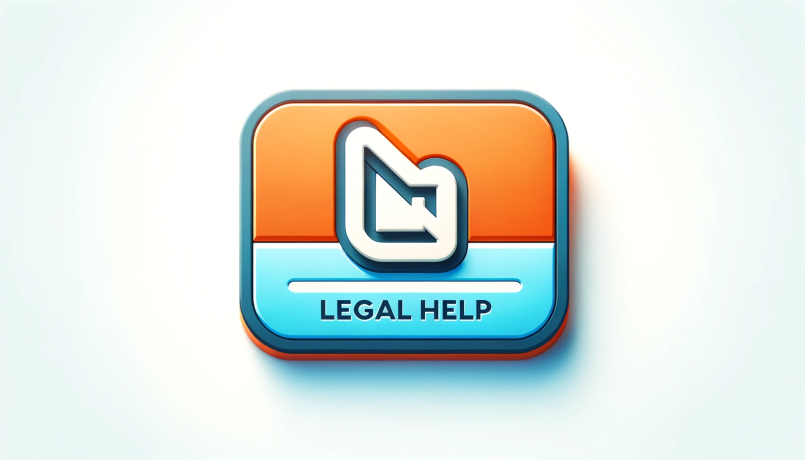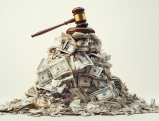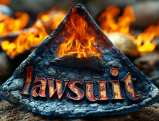
Knowing what to do immediately after a motorcycle accident in Los Angeles is crucial for protecting your health and legal rights. Follow these 10 essential steps to ensure you receive proper medical attention and maximize your potential for just compensation.
by LawInc Staff
May 27, 2024
Motorcycle accidents in Los Angeles often result in serious injuries, mounting medical bills, lost wages, and lifelong impacts. Taking smart steps immediately after a crash protects your health and legal rights.
This guide details essential actions to take immediately after a motorcycle wreck to safeguard your health and ability to secure just compensation.
From seeking medical care to preserving evidence, notifying insurers and more, learn how to position yourself for maximum physical and financial recovery.
1. Prioritize Your Safety and Well-Being
-
- Relocate to a Secure Area If Possible: Carefully move out of traffic to avoid further collisions.
- Keep Protective Gear On: Avoid removing your helmet or other gear unless medically necessary until police arrive.
- Call 911 Immediately: Report the accident to dispatch police and medical responders to the scene.
- Accept Emergency Medical Care: Allow paramedics to assess, treat and transport you to an ER if needed.
- Follow Up With Doctors Promptly: Schedule timely evaluations for a comprehensive diagnosis of all injuries.
Examples:
-
- John carefully moved his damaged bike to the shoulder before removing his helmet, avoiding oncoming cars.
- EMTs immobilized Sarah’s potentially broken arm and transported her to County USC for evaluation.
- Despite feeling shaken up but okay after the crash, Michael visited his doctor the next day and learned of a concussion.
- Extensive road rash prompted infection concerns, so Amanda followed up with a wound care specialist post-ER.
- Neck pain developed two days after Derrick’s accident, so he promptly saw his physician and began treatment for whiplash.
How to Proceed:
-
- Safely get out of the roadway if you can to prevent further harm, but remain nearby for responders to arrive.
- Call 911 as soon as possible to report the accident and locations needing police and ambulances dispatched.
- Vocalize any pain, numbness, dizziness or visual troubles to EMTs for a thorough examination before refusing transport.
- Visit your primary doctor or an urgent care clinic within 72 hours max for a full-body check-up.
- Take note of any new or worsening symptoms in the coming days/weeks and return for follow-up care as needed.
FAQs:
-
- Should I remove my helmet after a motorcycle crash? Not unless it’s interfering with breathing – keep it on until EMTs arrive and can safely remove it in case of spinal injuries.
- What if I feel okay and want to refuse ambulance transport? Calmly explain to EMTs you want a thorough exam and to discuss necessity of ER – shock often masks injuries.
- How soon after should I see a doctor if not taken to the hospital? Get checked within 72 hours maximum – many serious yet invisibile injuries like concussions or organ damage have delayed symptoms.
- Does soreness the next day warrant medical attention? Yes, many soft tissue injuries worsen over time, so have any unusual pain assessed.
- What new symptoms signal a need for more evaluation? Headaches, nausea, confusion, weakness, sensory deficits, breathing troubles, abdominal pain, etc.
2. Collect Important Accident Scene Evidence
-
- Take Photos/Video of Vehicles and Scene: Capture bike and car damage, debris, hazards, etc. from multiple angles.
- Photograph Your Visible Injuries: Document any cuts, road rash, bruising, bleeding, etc.
- Gather Witness Contact Info: Quickly get names and numbers of any observed who may provide statements.
- Diagram Collision Logistics: Sketch out the intersection, note vehicle directions, lane positions, etc.
- Preserve Physical Evidence: Keep damaged helmets, torn clothing, etc. that may help prove impact forces.
Examples:
-
- Jamal took photos showing the car’s front-end damage and his Kawasaki’s bent wheel and scraped fairings.
- Noting bruising on her hip and shoulder, Erica had a bystander snap pics of the impact points.
- By sketching the crash site, lane positions and skid mark locations, Damien illustrated how the car cut him off.
- Sheila kept the jeans shredded during her slide across the asphalt as evidence of road rash severity.
- Tyrone’s friend recorded a video walkthrough of the accident area, capturing footage missed in the initial photos.
How to Proceed:
-
- Take plentiful photos and videos on your phone of the accident scene – vehicle damage, debris fields, injuries, hazards, etc.
- Politely ask witnesses for their names and contact info in case your lawyer needs statements later.
- Sketch out the roads, intersections, direction of travel and collision logistics while fresh in your memory.
- Bag up your damaged helmet, clothing and gear for your legal team to inspect and document.
- Let police know about any nearby security or red light cameras that may have captured the accident on film.
FAQs:
-
- What if I’m too injured to collect evidence myself? See if a bystander can snap photos/videos of the accident scene for you before it’s cleared.
- Do I need to get witness statements or anything in writing? No, just quickly jot down contact info so your lawyer can reach out later if needed.
- What’s most important to photograph for evidence? Vehicle damage, injuries, road conditions, traffic controls and debris – a variety of angles helps.
- Should I hold onto my damaged bike? Yes, keep it in its post-crash condition so experts can analyze it before any insurance repairs.
- How can I document the accident scene if it’s not safe to stay in the road? Quickly snap what photos you can safely, focusing on important details like damage and injuries.
3. Wait for Police to Arrive Before Discussing Details
-
- Stick to the Basic Facts: Tell responding officers your name, the collision location and if you’re injured.
- Avoid Speculation or Guesses: Don’t hypothesize about what happened or why until the full investigation occurs.
- Never Admit or Assign Fault: Resist the urge to apologize or take blame – let the evidence determine liability.
- Be Honest and Forthcoming: Tell the truth about what happened without exaggeration or downplaying.
- Point Out Key Evidence: Calmly direct officers to physical evidence like skid marks or mention if witnesses saw what occurred.
Examples:
-
- “I was heading west on Wilshire Blvd when the collision occurred in the intersection with Westwood,” Carla stated plainly.
- Though the car failed to yield, Nick avoided arguing fault and simply said, “I had the green light to go straight.”
- “I’m honestly not totally sure what happened – it was so sudden,” Melissa told police, resisting speculation.
- While his leg was clearly broken, Jose avoided downplaying his pain and reported, “My lower leg is extremely painful and swollen.”
- Noting the smashed windshield, Arturo calmly told the officer, “My head impacted the car’s windshield, cracking the glass.”
How to Proceed:
-
- Provide responding officers with your identifying info and a very basic report of what occurred, sticking to known facts only.
- Resist getting into discussions of fault or liability prematurely – there will be time for that later once all evidence is collected.
- Be forthcoming about any injuries, pain or damage but do not exaggerate or downplay the extent at this time.
- Mention if any witnesses stopped or nearby cameras may have filmed what happened, but avoid discussing details with other parties yourself.
- Cooperate with officers but politely decline to give an official statement or sign anything without speaking to a lawyer first.
FAQs:
-
- Should I tell police if I think the accident was my fault? No, do not admit or assign blame to yourself or others – just state the basic facts of what occurred.
- What if I’m asked if I’m injured but I’m not sure yet? Say you’re shaken up and sore but will be getting checked out by a doctor to assess your condition fully.
- Can I get a copy of the police accident report? Yes, you can request the incident report from the responding agency, often for a small processing fee.
- What if I disagree with something in the police report? Bring any factual errors to your lawyer’s attention but remember the report is just one piece of evidence in your case.
- How soon after the accident can I get a copy of the report? Typically you can request a copy within a few days, but it may take a week or two for the full report to be available.
4. Obtain Driver and Vehicle Information
-
- Full Name and Contact Details: Get their name, phone number, email address and mailing address.
- Insurance Policy Info: Write down the driver’s insurance company name and policy number.
- Driver’s License Number: Note the other motorist’s license number and issuing state.
- License Plate Number: Get the full license plate number of the involved vehicle.
- Make, Model and Year of Car: Write down the vehicle make (e.g. Honda), model (e.g. Civic) and year.
Examples:
-
- Tanya took a cell phone photo of the other driver’s license, insurance card and plate to avoid missing any key details.
- Paul noticed the car that hit him had dealer plates, so he wrote down the full temporary tag number.
- After confirming he had her correct contact info, Jada asked the driver for her insurance details.
- Martin jotted down the driver’s name, a description of her car and her plate number before she drove away from the minor collision.
- Though the other driver seemed impatient, Kyle calmly insisted on documenting all the necessary insurance and contact information.
How to Proceed:
-
- Respectfully ask the other driver for their full name, phone number, email and address to follow up as needed.
- Request to see their driver’s license and insurance card to note policy details and confirm identity.
- Use your cell phone to photograph their license plate (even temporary dealer tags), driver’s license and insurance details.
- Write down the make, model, year and color of their vehicle to fully identify it.
- Take a photo of the other driver themselves in case a positive ID is needed later.
FAQs:
-
- What if the driver refuses to show me their license or insurance? Explain you are required to exchange info after an accident – if they won’t cooperate, ask the police to intervene.
- Should I give the other driver my insurance details too? Yes, you’re legally obligated to exchange insurance and contact information with the other parties in the collision.
- What if I’m too hurt to get the info myself? See if a witness can get the basic driver/vehicle details or take photos of their documents for you.
- How can I get the driver’s info if they fled the scene? Give the police any details you recall about the vehicle and driver – partial plate numbers can help track them down.
- What if the driver isn’t the registered owner? Still get the driver’s name and contact info, but also note the name/address of the car’s registered owner if different.
5. Notify Your Insurance Company
-
- Call From the Accident Scene if Possible: Many insurers have 24/7 claim reporting hotlines to explain next steps.
- Provide Essential Collision Details: Give them the accident date, time, location, involved parties, known injuries and damage.
- Ask About Medical Benefits: See if you have MedPay or PIP coverage for injury/treatment costs.
- Request a Claim Number: A claim number will be assigned to your case that you’ll need to reference later.
- Discuss Towing/Repair Needs: Your comprehensive or collision coverage may enable free towing and expedited repairs.
Examples:
-
- Before leaving the crash site, Brianna called her Geico insurance rep to report the collision and get a tow truck ordered.
- During his claim reporting call, Stefan provided his insurance company with the date, cross streets, driver details and police report number.
- Melinda was relieved to learn her $5,000 PIP coverage would help pay for her ambulance transport and ER visit.
- The claims rep gave Candace a claim number and advised her to use that in all future communications about her case.
- Alberto’s collision coverage allowed him to have his damaged Suzuki towed to a preferred repair shop for a fast fix.
How to Proceed:
-
- Call the number on your insurance card or policy to report your motorcycle crash claim as soon as safely possible.
- Provide the date, time, location, your bike’s info, the other driver’s details and a basic description of damage/injuries.
- Find out what injury and bike repair coverage you have to utilize, like MedPay, PIP, collision or comprehensive.
- Write down the claim number you’re assigned and carry that with you to all accident-related appointments.
- Ask about OEM repair requirements, towing allowances, rental vehicles and other ways to get you back on the road promptly.
FAQs:
-
- How long after my motorcycle crash do I have to report it to insurance? ASAP is always best, but most policies require reporting within 24 hours, so contact them quickly even if you don’t have all the info yet.
- Will my insurance rates go up if I wasn’t at fault? California law prohibits insurers from raising your rates if you were not principally at fault in the collision.
- Should I report the accident to the other driver’s insurer too? No, just notify your own insurance company and let them contact the other parties as needed.
- What if the other driver’s insurance calls me? Decline to give a recorded statement and refer them to your own insurance company to get the details.
- Will my health insurance cover my bike accident injuries? Yes, your normal health coverage will apply but you may also have special MedPay or PIP funds via your motorcycle policy.
6. Be Cautious When Discussing Fault
-
- Avoid Apologizing or Admitting Blame: Even casual apologies can be used against you as admissions of fault.
- Do Not Agree to Liability Verbally or in Writing: Let the full investigation determine culpability.
- Refrain From Arguing With Other Parties: Emotions run high after crashes, but arguing often backfires.
- Keep Discussions Brief and Factual: Avoid providing unnecessary details or opinions until you’ve consulted a lawyer.
- Direct Further Inquiries to Your Attorney: Once you’ve retained counsel, have them handle discussions of liability.
Examples:
-
- Maria resisted her instinctive urge to say “I’m so sorry” to the other driver, realizing it could read as an acceptance of blame.
- When the other motorist insisted Larry was speeding, he simply replied, “I disagree but we should let the investigators determine that.”
- Although the driver was yelling at Rachel, she remained composed and said, “I understand you’re upset, but arguing won’t help.”
- Chris provided responding officers with the basic facts requested but avoided offering his opinions on what caused the crash.
- Once Tiana hired an attorney, she gave the other driver’s insurance rep her lawyer’s number to direct further liability queries.
How to Proceed:
-
- Resist any urge to say “I’m sorry” or take the blame, even if you think you were partially at fault – it can be used against you later.
- Respectfully decline to discuss fault determinations or sign anything accepting liability without speaking to an attorney first.
- Remain calm if the other party is emotional or accusatory – simply say “I understand you’re upset, but we need to let the professionals figure this out.”
- Stick to the basic facts of what happened without offering subjective opinions on why the crash occurred or who’s responsible.
- Provide your lawyer’s contact info to claims adjusters or defense attorneys who want to discuss liability so they can handle those conversations.
FAQs:
-
- What if I’m certain the other driver caused the crash? You can state the objective facts about their actions but still avoid accusations or assigning definitive blame.
- Is it ever ok to apologize after an accident? It’s best not to, as even a simple “I’m sorry this happened” may be construed as an admission of fault.
- Should I correct the other driver if their version of events is way off? Firmly but diplomatically disagree if needed but say the full investigation will determine what happened.
- Can I tell my side of the story to the other driver’s insurance company? It’s advisable to decline to provide any statements to the opposing insurer without having your lawyer present.
- What if I’m not sure who was at fault? There’s often shared blame in crashes, so it’s wise not to make assumptions either way until the accident is thoroughly evaluated.
7. Start a Case Folder With Key Info & Evidence
-
- Police Accident Reports: Get a copy of the finalized accident report for your records.
- Insurance Policy Details: Keep your policy documents and claim number together.
- Medical Treatment Records: File all doctor reports, hospital records, test results, procedure info and bills.
- Witness Contact Information: Maintain a list of any witnesses who may need to provide statements later.
- Correspondence With Insurers: Save copies of letters, emails and logs of phone calls with insurance reps.
Examples:
-
- Fernando started a binder with divided sections for police docs, medical records, insurance papers, bike repair estimates and more.
- In Maggie’s folder, she kept a detailed calendar logging doctor appointments, treatments received and time missed from work.
- Using a secure cloud storage system, Jeffrey scanned and uploaded PDFs of his relevant documents so he could access them anywhere.
- Tracy printed out emails and took notes during insurance calls, dating each one before placing them chronologically in her file.
- Jamal made a spreadsheet totaling his medical bills, lost wages and other economic losses and saved it in his e-folder.
How to Proceed:
-
- Buy a multi-section folder or binder and label the sections for police reports, insurance docs, medical records, witness info etc.
- Print out photos of the accident scene, vehicle damage and injuries and put them in clear plastic sheets in the binder.
- Make digital backups by scanning documents and saving them securely in the cloud so nothing is lost if originals are misplaced.
- Keep a detailed log of dates and notes from conversations with insurers, doctors, employers etc. regarding your case.
- Organize all your documentation chronologically so you can easily find info needed to substantiate your claim and damages down the line.
FAQs:
-
- Can I just save digital copies of everything instead of hard copies? Digital records are great for sharing but it’s wise to also keep original hard copies of key evidence in case of data loss or technical issues.
- How detailed do my notes need to be? The more specific, the better – log dates, times, names, actions taken and topics discussed for any developments in your case.
- What if I forget to document something? Add it to your files as soon as you remember – your lawyer can help you fill in any gaps in the record down the line.
- Should I share this file with the insurance adjuster? You’ll need to provide them with certain evidence but let your attorney determine what documentation should be shared.
- How long should I keep my accident file? Maintain your folder until your case is fully resolved via settlement or verdict, which can sometimes take a few years.
8. Be Wary of Early Settlement Offers
-
- Insurer Goal is to Minimize Payouts: Initial offers often lowball true claim values.
- Your Damages Are Still Unfolding: Wait until you know the full scope of injuries, treatment and losses before settling.
- Consult an Attorney: Have a lawyer review any offer and advise you on its fairness before accepting.
- Focus on Physical Recovery First: Don’t rush to settle until you’ve reached maximum medical improvement.
- Negotiate Patiently: Be prepared for some back and forth to get the full compensation you deserve.
Examples:
-
- The day after Lila’s crash, the insurer called offering $5,000 to quickly settle – far less than her bike repairs and medical bills wound up costing.
- Rashad was tempted to take the $30,000 he was offered, but his attorney advised waiting until his future care needs were confirmed.
- Marissa had her lawyer review the insurer’s proposed settlement terms, and he pointed out how it would shortchange her.
- Though anxious to pay his bills, Jackson held off settling until he completed a full course of physical therapy and knew if he’d need surgery.
- Nina’s attorney negotiated the offer up from $50,000 to $115,000 over a few weeks, in line with what her doctors projected her lifetime care costs.
How to Proceed:
-
- Recognize insurers often pressure you to settle ASAP to limit their financial exposure before the true scope of your claim is known.
- Avoid signing anything releasing the insurer from future payments until you’ve reached maximum medical recovery.
- Have an experienced motorcycle accident attorney review any settlement offers you receive and advise you on countermeasures to take.
- Be prepared for your lawyer to engage in extended negotiations and even file a lawsuit to motivate a more reasonable offer.
- Fight the urge to accept an inadequate early offer out of financial desperation – your attorney can help address your immediate needs.
FAQs:
-
- What’s the minimum settlement amount I should accept? It depends on your unique damages but should cover all medical bills, lost earnings, property damage, pain and suffering.
- How can I get an early settlement offer if I need fast cash? It’s a big risk – consult your lawyer about other options like lawsuit loans to tie you over until you can get a proper settlement.
- Should I trust what the insurance adjuster says I’m entitled to? Adjusters work for the insurance company’s interests, not yours, so take their claim evaluations with a grain of salt.
- When is the earliest I should consider settling? Not until you’ve been released from medical treatment and have a validated prognosis for any future health issues.
- The at-fault driver admitted guilt and wants to settle privately – is that wise? No, it’s best to go through formal legal channels and get court/insurer sign-off on a proper settlement to protect your rights.
9. Track Your Damages and Losses
-
- Medical Bills: Keep copies of all hospital, doctor, PT, pharmacy and other health expenses.
- Lost Income: Document any missed work time and wages due to injuries or treatment.
- Property Damage: Save records of your bike repairs, gear replacement, towing fees etc.
- Travel Costs: Log miles driven to appointments and parking/gas costs incurred.
- Pain and Suffering: Journal how your injuries negatively impact your life and wellbeing.
Examples:
-
- Andre kept an envelope in his glovebox for collecting receipts any time he filled up en route to the doctor.
- Carla tracked her hours missed from work in a spreadsheet alongside her hourly pay rate to easily tally lost wages.
- Whenever his back pain flared up, Nico wrote a few lines in a journal app on his phone to vent and validate his suffering.
- Joanna scanned each itemized medical bill as it arrived and saved them to a cloud folder she shared with her attorney.
- Marcus kept a running list of his Ducati’s repair costs and replacement parts so he could substantiate his property damages.
How to Proceed:
-
- Maintain records of every medical expense you incur, including co-pays, prescriptions, braces, crutches etc.
- Ask your doctor for a work note confirming any missed time and calculate your lost income based on your typical wage rate.
- Log the dates and nature of your physical pain, mobility limitations, emotional anguish, family strains etc.
- Track mileage to and from accident-related appointments and save parking/gas receipts for reimbursement.
- Photograph your injuries at various stages of healing to visually capture the length and difficulty of your recovery.
FAQs:
-
- What if I don’t have receipts for some expenses? Bank/credit card statements showing transaction details can substitute if you can’t locate receipts.
- How detailed should my pain and suffering notes be? Write down the date, time, nature and severity of symptoms whenever you experience notable problems.
- Is there a standard way to calculate pain and suffering damages? Most use a multiplier of your economic losses but the unique facts of your case will determine an appropriate amount.
- What if I don’t miss any work – can I still get compensated? Yes, you can pursue a claim for lost earning potential if your injuries will negatively impact your future work abilities/advancement.
- How can I prove my lost wages if I’m self-employed? Provide tax returns, 1099s, invoices or other documentation of your typical earnings and revenue lost while injured.
10. Hire an Experienced Motorcycle Accident Attorney
-
- Look for Specialized Expertise: Choose a lawyer who focuses their practice on motorcycle crash cases.
- Discuss Fee Structures: Most work on contingency, meaning they only get paid if you do.
- Check Their Track Record: Ask about their past case results and courtroom experience.
- Make Sure Your Personalities Mesh: You’ll work closely with them, so find an attorney you feel comfortable with.
- Inquire About Caseload: Make sure they can devote ample time and attention to your claim.
Examples:
-
- Warren felt confident hiring a lawyer whose website showcased dozens of positive results for motorsports accident victims.
- The first attorney Tori met with seemed distracted and eager to rush through their consultation, so she kept looking.
- Miguel was relieved to learn he wouldn’t owe any legal fees unless his case successfully settled or won in court.
- Brenna chose a lawyer who made her feel truly heard and cared for and took time to address all her concerns.
- After verifying his prospective attorney’s bar standing and reading client reviews, Amir felt secure signing a representation agreement.
How to Proceed:
-
- Search for attorneys who primarily handle motorcycle accident cases, not just car crash or general injury claims.
- Schedule consultations with a few prospects to assess their expertise, trial skills, professional rapport and case management style.
- Have them walk you through their typical fee agreement and confirm they work on contingency, not retainer.
- Ask for examples of cases similar to yours they’ve handled and how long they typically take to reach resolutions.
- Go with your gut about which attorney makes you feel confident, prioritized and positioned for the best possible outcome.
FAQs:
-
- Can I afford to hire a motorcycle accident lawyer? Yes, most work on contingency, meaning they front all costs and only collect a fee if they win money for you.
- What if I already gave a statement to the other driver’s insurer? Tell your lawyer right away – it may complicate things but doesn’t bar you from pursuing a claim with proper counsel.
- How soon after my motorcycle crash should I hire an attorney? ASAP to meet any deadlines, preserve evidence and protect your rights – ideally within a week or two.
- Should I hire a lawyer in a hit and run motorcycle accident? Yes – they can help identify the driver, utilize your uninsured motorist coverage or find other avenues of compensation.
- I wasn’t wearing a helmet – will that prevent me from getting a lawyer? No, CA allows helmetless riders to still recover damages, though it may reduce your compensation amount.
Summary

Did You Know? In Los Angeles, motorcycle accidents account for approximately 15% of all traffic fatalities, even though motorcycles make up only about 3% of registered vehicles. This highlights the significant risks motorcyclists face on LA roads and the importance of taking immediate steps to protect your health and legal rights after an accident.
Motorcycle accidents in Los Angeles often inflict serious physical, financial and personal devastation. Knowing what steps to take immediately after a crash can make all the difference in protecting your health, legal rights and financial future.
Prioritize your safety and get assessed by doctors right away, even if you feel okay. Report the accident to police and insurers and start gathering evidence. Avoid admitting fault, giving statements or accepting settlements without consulting an expert motorcycle accident attorney first.
Injured in a Motorcycle Accident? Get a Free Case Review
If you or a loved one has been hurt in a motorcycle crash in Los Angeles, contact a skilled attorney right away for a free consultation. They can help you understand your rights, build a strong case and fight for the maximum compensation you deserve.

Injured in a LA motorcycle accident? Reach out to LawInc today for a free case evaluation so you know your rights.
Test Your Motorcycle Accident Knowledge
Questions: Immediate Accident Scene Actions
-
- 1. What’s most important to do first after a motorcycle crash?
- A) Get to a safe location
- B) Check for injuries
- C) Call the police
- D) All of the above
- 2. Why shouldn’t you remove your helmet after a crash?
- A) Could worsen neck injuries
- B) Makes injuries less visible
- C) Keeps your identity hidden
- D) Protects from onlookers
- 3. What info should you collect at the scene if able?
- A) Photos of damage and injuries
- B) Driver’s contact and insurance info
- C) Names of willing witnesses
- D) All of the above
- 4. Is it OK to apologize to the other driver after an accident?
- A) Yes, it’s the polite thing to do
- B) Only if you believe you caused the crash
- C) No, it can be seen as admitting fault
- D) Doesn’t matter if no one else hears it
- 5. When should you notify your insurance company about the accident?
- A) At the scene if possible
- B) Within 24 hours
- C) After you consult a lawyer
- D) When you get the police report
- 1. What’s most important to do first after a motorcycle crash?
Answers: Immediate Accident Scene Actions
-
- 1. D) The top priorities after a wreck are to get yourself out of danger, assess for injuries and report the crash to authorities.
- 2. A) Removing a rider’s helmet too soon after impact can exacerbate potential spine or neck injuries, so leave it on until EMTs arrive.
- 3. D) Collecting as much evidence and info as safely possible at the scene lays a strong foundation for your future claim.
- 4. C) Even a simple “I’m sorry” can later be twisted into an admission of liability, so it’s best not to apologize after a crash.
- 5. B) Most insurance policies require you to report an accident claim within 24 hours, though sooner is always better.
Questions: Protecting Your Rights & Recovery
-
- 1. When should you see a doctor after a motorcycle accident?
- A) At the scene if EMTs advise it
- B) Within 72 hours to be safe
- C) When you experience symptoms
- D) All of the above
- 2. What’s the risk of accepting an early settlement offer?
- A) Might not cover future damages
- B) Could be less than you deserve
- C) Waives your rights to more money
- D) All of the above
- 3. What’s a common tactic insurers use to limit payouts?
- A) Disputing who was at fault
- B) Denying the claim outright
- C) Requesting recorded statements
- D) Offering lowball quick settlements
- 4. What damages can you include in your injury claim?
- A) Past and future medical bills
- B) Lost wages and earning potential
- C) Pain and suffering
- D) All of the above
- 5. What’s the benefit of hiring an experienced motorcycle accident lawyer?
- A) Handling all complex legal procedures
- B) Maximizing your compensation amount
- C) Providing support and advocacy
- D) All of the above
- 1. When should you see a doctor after a motorcycle accident?
Answers: Protecting Your Rights & Recovery
-
- 1. D) Get checked out ASAP whether you’re feeling symptoms or not, as some serious injuries may be masked at first.
- 2. D) Settling too soon risks shorting yourself on the full amount of damages you’re owed for ongoing impacts on your life.
- 3. D) Insurers often dangle fast but inadequate settlements to limit their financial exposure before the full scope of your losses is realized.
- 4. D) Your claim should include compensation for all the ways your injuries negatively affect you physically, financially and emotionally.
- 5. D) A lawyer specializing in motorcycle crashes can handle the legal heavy lifting while fighting to maximize your recovery on all fronts.
Disclaimer
The legal information provided in this article discussing motorcycle accidents and injury claims in Los Angeles is for general informational purposes only. It does not constitute formal legal advice nor establish an attorney-client relationship. Laws may have changed since this article’s publication and may not apply to all jurisdictions or circumstances.
For expert legal guidance on your specific motorcycle crash claim, please contact a personal injury lawyer in your area. Most reputable accident attorneys offer free consultations to review your case, explain your rights and discuss your options for pursuing compensation.
Related Articles
Los Angeles Personal Injury Lawyer Reveals Hidden Tricks Insurance Companies Don’t Want You to Know
From Personal Injury to Paycheck: Your Road to Maximum Compensation After an Accident
Best Injury Lawyers in California | What They All Have in Common










